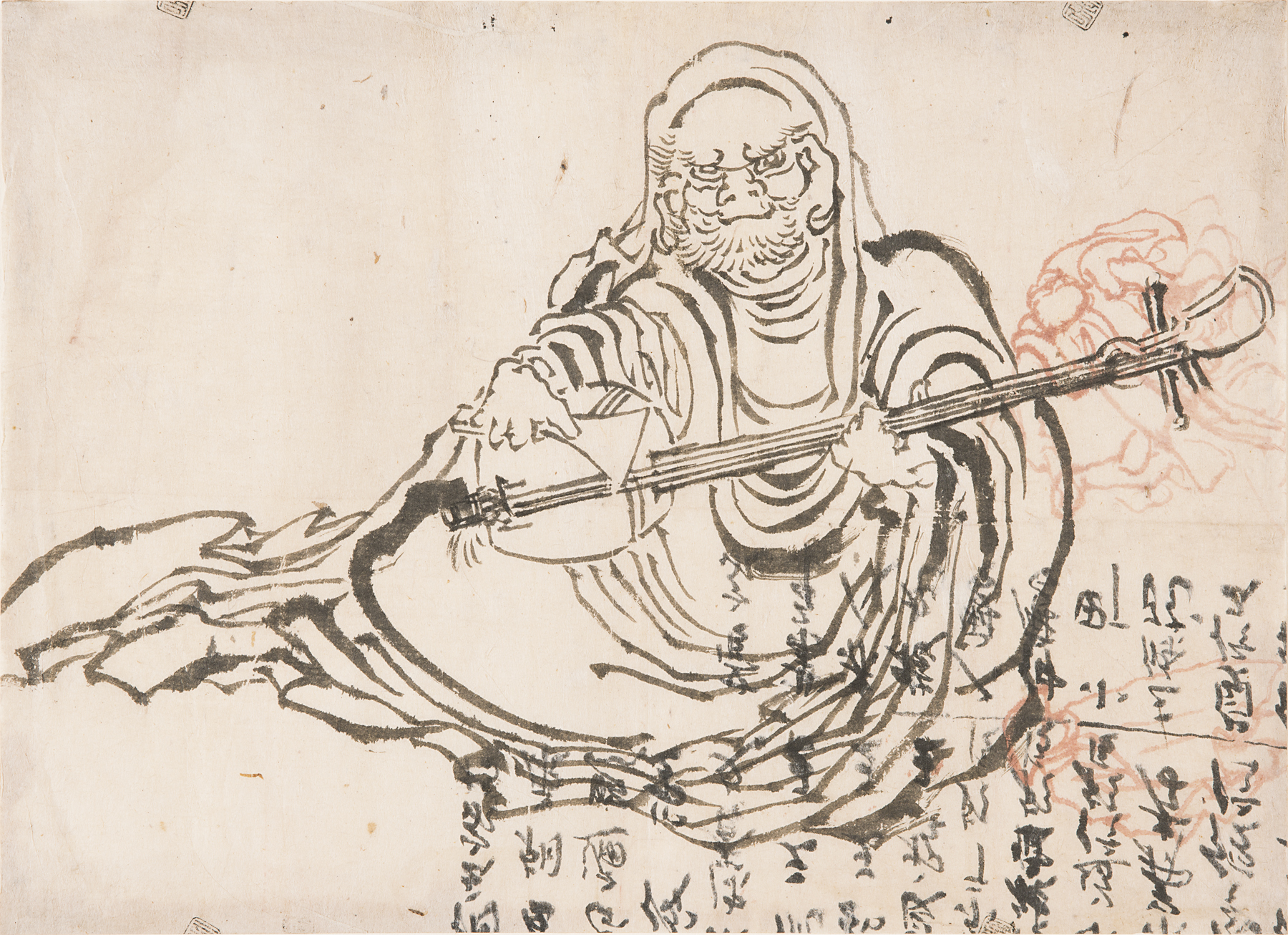Daruma Playing a Shamisen, Katsushika Hokusai
Artwork Overview
Katsushika Hokusai, artist
1760–1849
Daruma Playing a Shamisen,
circa 1830s, Edo period (1600–1868)
Where object was made: Japan
Material/technique: laid paper; ink
Dimensions:
Object Height/Width (Height x Width): 21.4 x 29.5 cm
Object Height/Width (Height x Width): 8 7/16 x 11 5/8 in
Mat Dimensions (Height x Width): 14 x 19 in
Object Height/Width (Height x Width): 21.4 x 29.5 cm
Object Height/Width (Height x Width): 8 7/16 x 11 5/8 in
Mat Dimensions (Height x Width): 14 x 19 in
Credit line: Museum purchase
Accession number: 0000.2481
Not on display
If you wish to reproduce this image, please submit an image request


